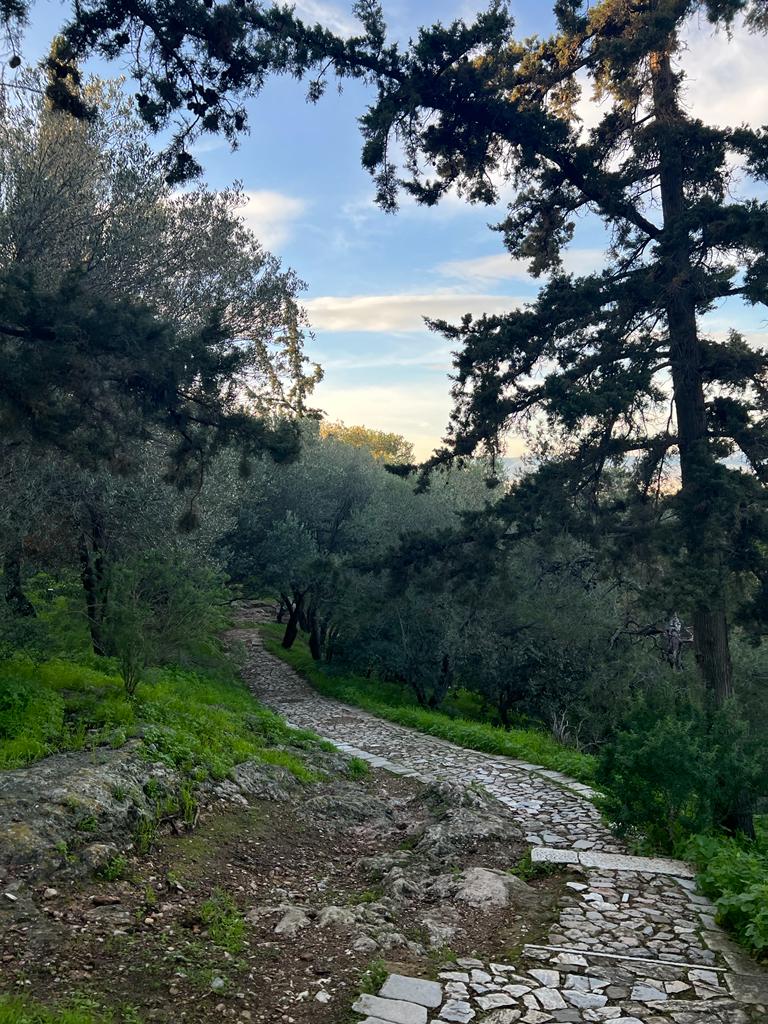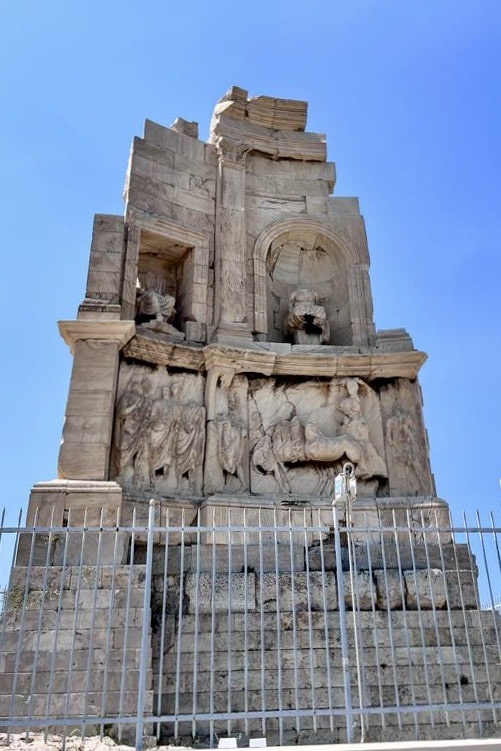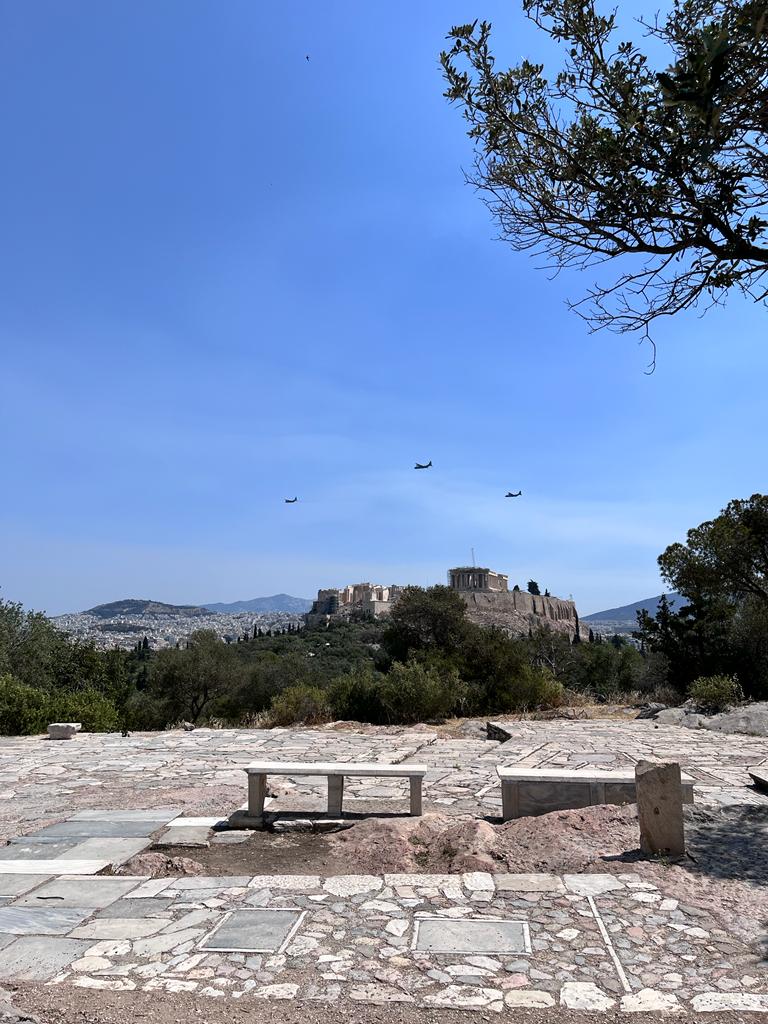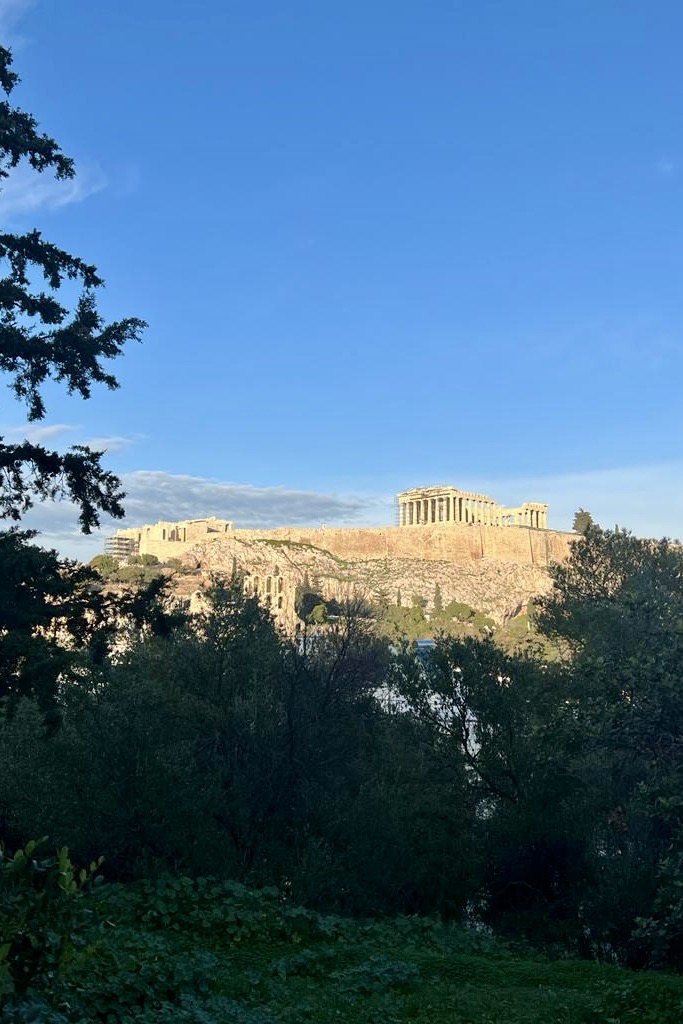Let me paint a picture for you. It is mid-summer, you are in one of the world’s oldest cities, Athens, and you are enjoining your morning coffee in a traditional coffee place in the picturesque neighborhood of Plaka, nestled in the shade of the Acropolis. Your plans of the day include visiting the ancient citadel of Acropolis, with the Parthenon and the temple of Athena Nike, followed by a visit to the Acropolis Museum and a final stop in the Thissio neighborhood for a long afternoon stroll and dinner in a local tavern. Just in time for sunset, while walking through the local shops in Thissio, something gets your attention. It is a hill, maybe a monument. The view from up there must be breathtaking, you think; But is it a good idea to walk up there or is it a waste of time? If you are a sunset chaser, please follow me.
The top of the hill is a twenty minutes walk from Thissio metro station. As you walk towards the hill, the path becomes a pedestrianized alley surrounded by olive trees and pines. The landscape gradually changes from urban to rural, giving the impression of a place detached from the city’s grey color. In the heart of the city center, where the fast-paced modern life continues, this place takes you back to ancient times, when the hill was known as the Hill of Muses, to whom it was first dedicated. The ancient Greek traveler and geographer, Pausanias, in his work Periegesis Hellados (Description of Greece) gives a different version of the events, as he attributes the name of the hill to the famous poet of the 6th Century B.C. Musaeus, who was allegedly buried there. Either way, it is a place connected to the act of inspiration, the arts, and literature.

Nowadays, the place is known as Philopappos hill because of the marble monument of Philopappos that crowns the top of the hill. Gaius Julius Antiochus Epiphanes Philopappos was a member of the royal family of Commagene, a Syrian man as Pausanias describes him, who was settled in Athens after his exile. Philopappos not only became an Athenian citizen but was considered an important benefactor of the city that the Athenians respected. After he died in 114 BC or 116 BC, the city permitted his family to build a marble tomb to be buried and a monument. On the top of the hill, the monument is 12 meters high and made of Pentelic marble. The position, structure, and rich decoration of the tomb testify the high status that Philopappos enjoyed as part of Athenian society. The monument is a two-part structure. The upper part is decorated with three statues, among which the statue of Philopappos himself stands in the center.

Philopappos is the highest of the three hills. The other two are the Hill of Nymphs and Pnyka (Pnyx) Hill. In ancient times the Hill of Nymphs was a place of worship dedicated to the nymphs. Nowadays, on the hill is situated the National Observatory of Athens, the oldest research institution for the study of astronomy and seismology in Greece. Pnyka is the place where democracy was born, introducing the opportunity for the citizens to participate directly in the political arena. The male Athenians as equals were gathering at Pnyka to discuss political matters and take decisions on important issues for their city. Following the route to Philopappos hill, one can visit also the Saint Dimitrios Loumbardiaris Medieval Church, one of the oldest churches in Athens, Kimon’s Tomb, the burial place of the Olympic victor Kimon and the Andero, a viewpoint that offers the best view of the Acropolis.

Standing at the top of the hill, you can get a 360° view of the whole city of Athens. From the Acropolis to the city center and the Aegean Sea, the view is mesmerizing. There you will find locals enjoying the landscape, having a picnic, or just walking around. The place is not that popular to tourists and rarely overpacked, enabling the visitors to get an authentic experience of the city and enjoy the true spirit of Athens and its people.
Travel Tip from a Local:
Although I love sunsets, nothing can compare to a sunrise, especially at Philopappos hill overwatching Athens.
XXXXXXXXXXXXXXXXX